
Allen Williams
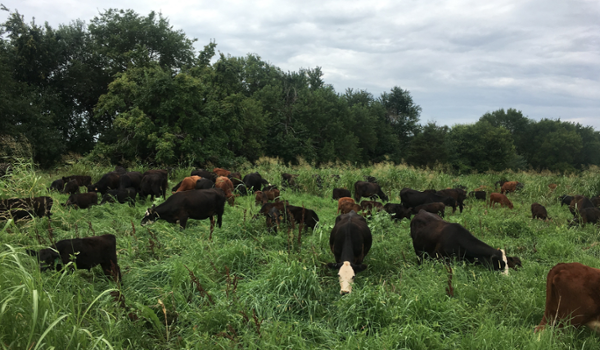
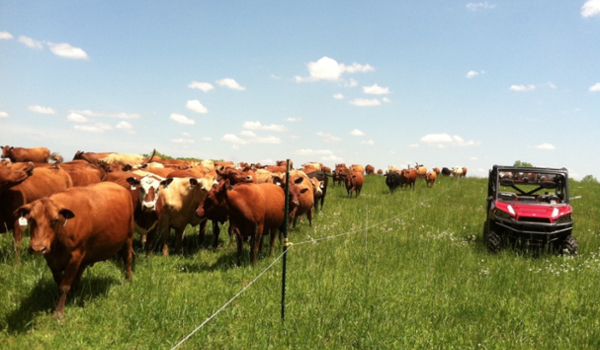
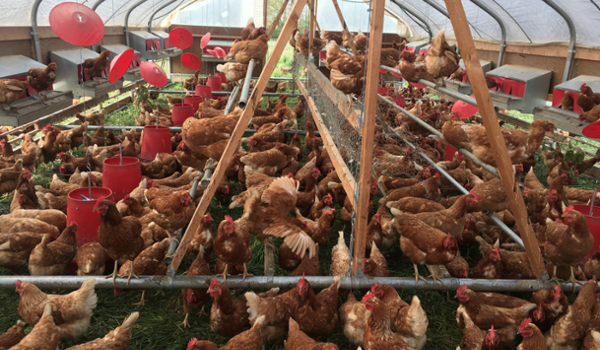
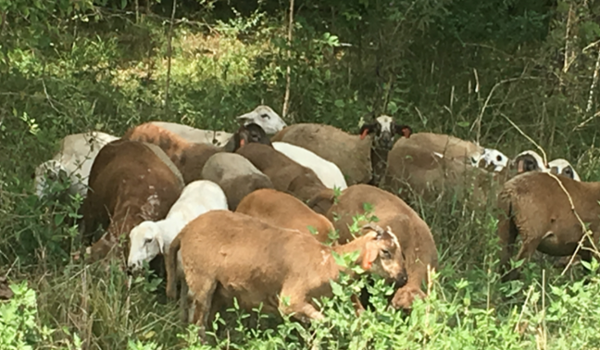
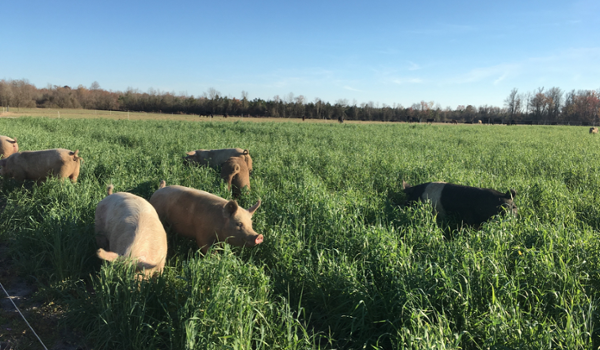
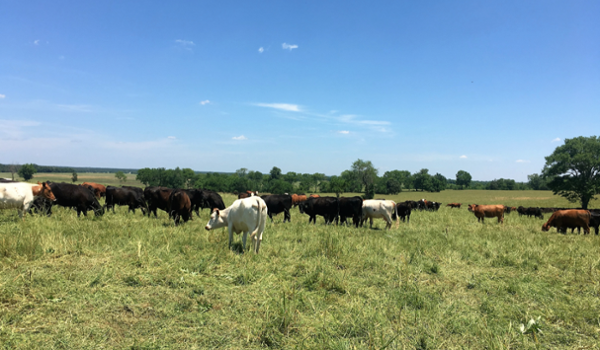
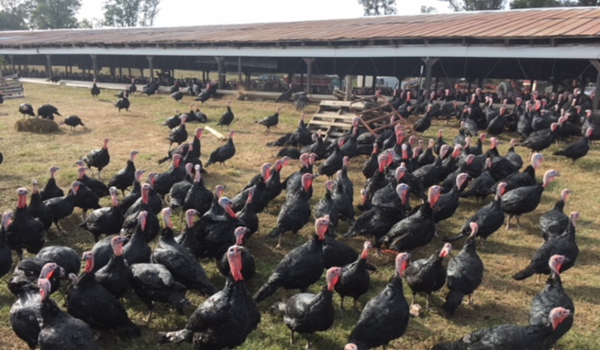
Family History
Allen Williams was born and raised on his family’s farm near Rock Hill, South Carolina, representing the 6th generation on that farm. His ancestors moved there from Virginia in 1840. “I’ve been integrally involved in agriculture my whole life in many different ways,” he said. “We had a very diversified farm growing up in the 1960’s and 70’s. That included cattle, sheep, pigs, goats, chickens, and many other types of poultry.” They also raised large vegetable gardens, crops, apples, pears, peaches, plums, muscadines, and other fruit. “It wasn’t your typical monoculture type farm that has evolved over the last several decades,” Williams said. “That helped shape some of the reasons why we do what we do today.” His family, brother and cousins still run their family farm in South Carolina.
He left home for college in the late 1970’s to attend Clemson University. He obtained his B.S. in Animal Science and went back home to the farm. He later went back to Clemson to earn his M.S. in Animal Genetics, then went on to Louisiana State University to earn his Ph.D. in Animal Genetics. He spent 15 years in academia, teaching and doing research and extension work. In 2000, he left academia and went back into private business. “We’ve been farming, ranching, and consulting full-time ever since,” he said.
Today
Williams now works in Mississippi and Alabama and is a partner in a pastured protein business named Joyce Farms. They market predominantly to restaurants up and down the east coast.
Williams has no long-term connection with his current land. “Heritage is incredibly important to me,” he said. “I value multigenerational family farms. That is very important. A lot of what we do today in our consulting and teaching and so forth is heavily related to that.” He wants to keep the land maintained for future generations.
His cropping systems are “highly diverse and getting more diverse all the time with intention. That’s absolutely with intention,” he said. They have multiple species of livestock. They do grass fed beef starting with cow calf production, pastured pig production, lamb (using hair sheep), poultry production including broiler chickens, turkeys, pheasants and guinea. They also produce and market pastured eggs to both restaurants and their CSA. In addition, they have certified organic market gardens and do some specialty and heritage grains such as purple straw wheat, carolina gold rice, bloody butcher corn, hopi blue corn, turmeric, ginseng, indigo, mushrooms, timber production, honey production. “We’ll continue to add revenue streams,” he said.
“When I grew up, our family farm was pretty diverse. We grew crops, vegetables, fruit orchards, multiple species of livestock, and we also had a general store, so we marketed a lot of what we produced to the stores. Today, that would be direct marketing. Back then, it was simply the way we did things.”
A brief history of conventional agriculture
“Since World War II, farming and ranching has become highly monoculture in nature, and the primary thing that drove that was the development of all the chemicals and synthetics in World War I and World War II that were developed for warfare, not agriculture use.
“You had these big companies working to produce chemicals, and then after the war ended, they needed to be able to utilize those chemicals and synthetics in some other way, so the government pushed for that to be used in agriculture instead.
“That’s what led to the tremendous proliferation of monoculture agriculture. That was not the norm prior to that. Most farms were more diverse. They had multiple species of livestock and therefore more revenue streams.
“Any given crop can fail in any given year. If you had a crop failure prior to federal crop insurance programs and farm subsidies and disaster payments, what did you do? You were out of business. All farmers knew that. There was no backup. The federal government wasn’t going to come in and rescue you.
“All the chemicals and synthetic fertilizers weren’t available, so how did they generate fertility? Through their livestock. They grew both crops and livestock. The livestock put fertility back into the land through grazing and manure.
“The reason that we (William’s farm) have moved back toward high levels of diversity is that monoculture agriculture is not working in many ways.
“Number 1, it’s not working financially. Many farms and farmers are in serious debt and financial struggle today, so much so that farmers in the US today have one of the highest rates of suicide. Farmers should have one of the most enjoyable lifestyles, but today it is one of the most stressful.
“Many cannot operate without loans and government subsidies and disaster payments. So, what we’re doing is we’re creating a system that I call so old that it’s new. What we’re doing is we’re marrying newer technology we can use to help us be highly efficient with stacked enterprise or multi enterprise farms.
“Instead of having a great reliance on chemicals and synthetic fertilizers and relying on government subsidy programs, we have slowly weaned ourselves off those things. We don’t apply for crop insurance. We don’t apply for farm subsidy payments of any kind. We don’t need those because of our diverse revenue streams. We’ve been able to significantly reduce input costs.”
A typical farm
A typical farm in the midwest produces corn and soybeans. The vast majority of midwestern corn and soybeans are not used directly for human food, but rather for biofuel production and animal feedstuffs. People don’t sit down to a bowl of field corn or a plate of field soybeans at the dinner table. They instead eat the byproducts such as high fructose corn syrup, soybean oils, etc. Corn and soybean farmers have one revenue stream per acre that they rely upon annually. If those crops fail, they are then dependent on crop insurance to make it through the year. Often, If one crop fails, the other fails because the conditions causing one to fail can cause the other to fail. A flood would affect both of them. A drought would affect both of them. “We believe and have proven that every acre can produce multiple crops or sources of revenue every year,” Williams said. “Every acre can produce not only corn or soybeans or wheat every year, but it can also produce honey from bees, it can produce pastured protein, it can produce highly diverse cover crops that can in turn feed multiple species of livestock that generate multiple revenue streams for us.”
Because less than 2 percent of Americans live on a farm, agritourism is becoming a major revenue generator. People pay to go to farms for events and tours, and to fish, hunt, birdwatch, and learn. Williams hosts classes and workshops on his farm. In the fall, they throw a harvest party where guests can partake in a meal cooked exclusively with food produced right on the farm and participate in activities like hayrides and corn mazes. “Agritourism can go in so many different directions,” Williams said.
Goals of the operation
William’s has three goals for his operation. The first is to be profitable. “If you’re not profitable, nothing else matters,” he said.
The second goal, quality of life, is directly tied to the first. “Farmers are committing suicide because they no longer have quality of life. They want their children and grandchildren and everyone that works with them to also enjoy quality of life. Without profit, you can’t have quality of life. It’s just not going to happen.”
The third goal is to be able to pass things along to following generations. “We want to demonstrate to others that there is significant opportunity in agriculture if you farm and ranch this way (regeneratively), and that this has enormous potential to grow and revitalize the rural economies of the US. We absolutely want to do that. We believe in revitalization of the rural economies. We believe in providing opportunities to younger farmers and ranchers to get in this business without being heavily encumbered by debt.”
His farm strives to meet these three goals in various ways. They have a farm business incubator program where they bring in young people to train them and offer business opportunities so they can build up equity and start their own farm. This helps to build the rural economy. The young farmers have to develop a business plan and then present it to them, If they think the idea has potential, the farm will help them by providing acres to develop that enterprise, capital and market for the products they produce.
They also hold workshops where they train farmers, ranchers and consumers on how to become aware of their opportunities and gain a heightened sense of awareness of what highly nutritious and flavorful food is all about. “We’re actively doing what we preach by what we do out in the community,” Williams said. “We have an obligation to the broader community."
William’s current thinking
“I grew up in this diverse farm and the majority of what we ate, we produced on the farm. I was used to wonderful foods, absolutely flavorful, packed with nutrition. I thought all food was great at that point.” Then he went off to college and discovered “boy, not all food is good.” “I initially thought they didn’t know how to cook, but then discovered they were sourcing this conventionally produced food that lacked flavor and nutrition. Yet, as a professor I became heavily entrenched in the commodity and conventional.” After doing some research, he discovered they were “putting a band-aid on a gushing wound.”
They were treating the symptoms rather than the cause. It was becoming increasingly difficult to make a living as a farmer. Input costs were rising. Inputs were supposed to help them become more profitable, yet they were spending of all of their profit on inputs. Their animals were becoming more reliant on vaccines, antibiotics, feed supplements, and pesticides. Their crops were too reliant on fertilizers.
“As a researcher, I had to start questioning, what are we doing? How are we making a difference? That caused me to start thinking about how we did it growing up when we didn’t have these chemicals. How did we make it? Why were our crops healthy? Why was our livestock healthy? Why were we healthy? Growing up, we barely saw an obese farmer. They were lean and mean. Same with their kids. Today, when you look at populations by profession and their rates of obesity, the farming population is right there with any other sector of the population. Why? Why did all of that start happening?” Williams wanted to know.
“That led me full circle as I started to put the puzzle pieces together.”
“As a researcher, I had to come to grips with that. That’s why I transitioned my research into regenerative practices and soil health and all of those types of things and ecological principles… We've divorced ourselves in agriculture form the very things that are most important to us.”
The operation
“Personally, we’re farming on a little more than 6,000 acres,” Williams said. “Through our Joyce Farms Program and partnerships with other farmers, that’s well over 20,000 acres that's being directly impacted through what we do. Through our consulting company, Understanding Ag, LLC, and our Soil Health Academy we’re impacting tens of millions of acres in working with farmers and ranchers to help them implement regenerative practices. No-till, highly diverse cover crops, multi species livestock with adapting grazing. We’re implementing all of those.”
The impacts of regenerative agriculture
“On day one and in year one, the land was just like everybody else's land. It had been conventionally farmed up until that point,” Williams said.” We've been monitoring and measuring and keeping track of the progress we've made… We routinely present all that data at our Soil Health Academy... The data is readily available. We’re continuing to monitor and track our data and improvements.”
Williams has been routinely monitoring, measuring and keeping track of the progress being made on their land ever since they began implementing regenerative agriculture practices. To see the data and learn more, visit the Soil Health Academy. Other helpful resources:
Soil Carbon Cowboys Film Series(opens in new window)
A Regenerative Secret, The Farmer’s Footprint(opens in new window)
Wallace Center Winrock Foundation(opens in new window)
The Pasture Project(opens in new window)
The Grassfed Exchange(opens in new window)
“We have made significant progress, and it starts with the soil,” Williams said. Their water quality has gone up. They’ve increased water infiltration rates, reducing runoff and erosion. They’ve lowered their input costs. Their biodiversity has improved, including influential insects and pollinators like butterflies, bees, lady beetles, dung beetles. Their bird population “has exploded.” That’s a key indicator of improved soil health. The positive impact on bird populations has been so good that they are working with Audubon in the development of the Audubon Conservation Ranching program. Now, farmers and ranchers can become Audubon certified as a bird friendly grazer.
Advice for farmers thinking about implementing regenerative agriculture practices
“Do it. Do it as rapidly as you can, but first educate yourself. Nobody can do what they are not familiar with. If you haven’t studied engineering, you can’t perform as an engineer tomorrow. Same thing with regenerative agriculture. You have to educate yourself.”
“Farming regeneratively is not a formula or a recipe, and most farms and ranches are looking for just that. Most farmers are looking for that because they've become used to it. The real answer to that is it depends on the year, where you are in your soil health profile, your current goals and objective, what you have available to you, your context. Do not look for a formula or recipe or you will be making one of the most profound mistakes people make in agriculture. We call what we do adaptive stewardship. If you’re going to be regenerative, you must be adaptive. You must be because we're farming in the real world. In the real world nature has control, not us. We do not know from any given point in time what's going to happen, so we have to be able to flex and adjust and change according to what nature is presenting to us and according to our ultimate goals and objectives. Your cover crop mixes will change and alter each year, and they should. The way you plant will depend on conditions and timing… There is no one answer, and we don’t give one, and we caution people do not give one. Inevitably, if you do the same thing year in year out, it will quit working. It will not work the same year in and year out.”
“Network yourself with other farmers and ranchers who are doing this and have already made the transition so you can learn from them. Learn their problems and how they overcame those problems. Go visit other farmers and ranchers that have made this transition. It’s no different than learning anything else. If you want to learn something, you’ve got to go to the resources where you can learn this stuff. You’ve got to be willing to take some time to truly educate yourself and part of that means getting off of your farm.”
